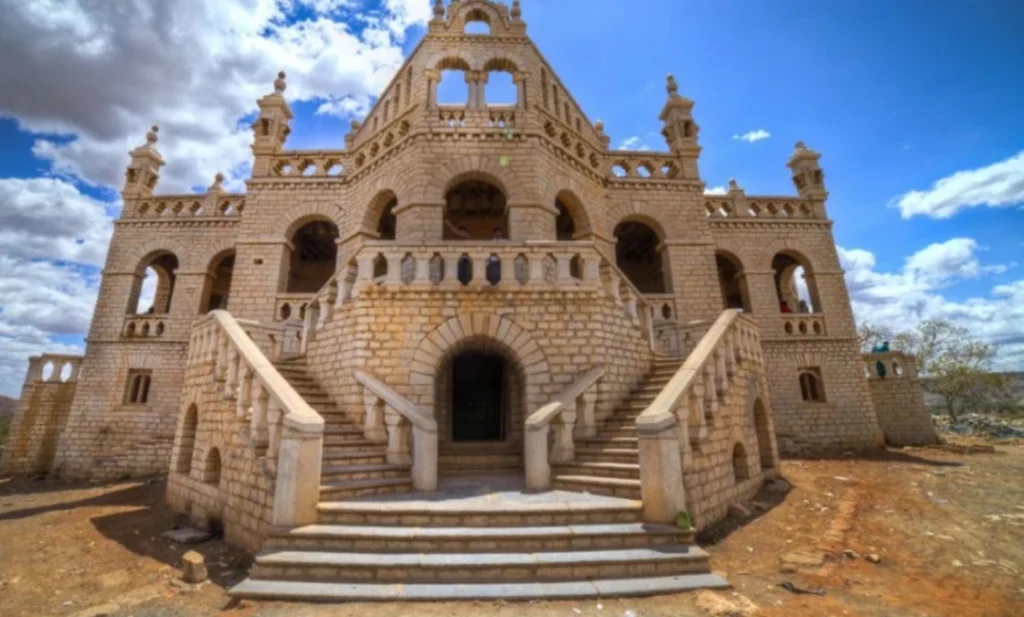Discover Kurnool District, Andhra Pradesh—known for its rich history, cultural heritage, scenic beauty, and rapid growth. A perfect blend of tradition and modernity.

Explore Kurnool: A Vibrant Blend of Heritage & Progress
Kurnool District, located in the southern state of Andhra Pradesh, India, is a region rich in history, culture, and natural beauty. Spanning an area of approximately 17,658 square kilometers, it holds a significant place in the state’s heritage. The district’s administrative center, also named Kurnool, serves as a hub of commercial, educational, and administrative activities.
The history of Kurnool District dates back to ancient times, with evidence of human settlements dating as far back as the Neolithic era. Over the centuries, the region witnessed the rule of various dynasties, including the Mauryas, Cholas, and Vijayanagara Empire. This diverse history has left its mark on the district’s architecture, art, and cultural practices. The intricate carvings at the Belum Caves and the historical Konda Reddy Fort stand as testaments to the architectural marvels of the past.
One of the district’s prominent features is its geographical diversity. The landscape transitions from fertile plains along the Tungabhadra and Handri rivers to rocky terrains in the Nallamala Hills. The Alampur temples, situated at the confluence of the Tungabhadra and Krishna rivers, attract both pilgrims and history enthusiasts. Moreover, the Ahobilam temple complex nestled in the Nallamala Hills offers a spiritual retreat amid lush surroundings.
Kurnool District boasts a blend of cultures and traditions due to its history as a melting pot of various civilizations. The annual festival of Maha Shivaratri witnesses thousands of devotees thronging the Srisailam temple, enhancing the spiritual aura of the region. The district also celebrates local festivals like Bathukamma and Ugadi with fervor, showcasing its vibrant cultural heritage.
The economy of Kurnool District is primarily agrarian, with agriculture playing a vital role in the livelihood of the population. Crops such as cotton, groundnut, and sunflower are cultivated, contributing to the state’s agricultural output. The Nandikotkur region is known for its limestone deposits, supporting the cement industry. Additionally, the district’s Handloom Park showcases the traditional skills of its weavers, who produce exquisite Kurnool silk sarees.
Education in Kurnool District has seen significant growth, with numerous schools, colleges, and technical institutions catering to a wide range of academic pursuits. The district’s emphasis on education has resulted in a more educated and skilled workforce, contributing to its economic development.
In recent years, Kurnool District has embraced modernization while preserving its cultural roots. Infrastructure development, improved connectivity, and the establishment of industrial zones have contributed to its growth. The Kurnool Airport has enhanced regional and national connectivity, making it more accessible to tourists and businesses alike.
Famous Places in Kurnool District
Kurnool District is home to a multitude of famous places that showcase its historical, cultural, and natural significance. From ancient temples to stunning landscapes, here are some of the prominent attractions in the district:
Belum Caves: These breathtaking limestone caves are the second longest caves in India and are known for their stunning stalactite and stalagmite formations. The intricate underground chambers and passages offer an awe-inspiring experience for visitors.
Srisailam Temple: Situated on the banks of the Krishna River, the Srisailam Temple is dedicated to Lord Shiva and is one of the twelve Jyotirlingas. The temple complex, surrounded by lush greenery, attracts pilgrims and tourists alike.
Ahobilam: Nestled amidst the Nallamala Hills, Ahobilam is a temple town known for its nine shrines dedicated to Lord Narasimha. The serene surroundings and spiritual ambiance make it a popular destination for devotees.
Konda Reddy Fort: This historic fort, built during the medieval period, offers panoramic views of the surrounding landscape. The fort’s architecture and strategic location make it an intriguing historical site to explore.
Yaganti Temple: Dedicated to Lord Shiva, this ancient temple is renowned for its unique rock-carved idol of Nandi, the sacred bull. The temple’s serene atmosphere and intricate carvings draw visitors seeking spiritual solace.
Alampur Temples: Situated at the confluence of the Tungabhadra and Krishna rivers, the Alampur temple complex features ancient shrines reflecting the Chalukyan architectural style. The Navabrahma temples and Jogulamba Temple are among the notable attractions here.
Orvakal Rock Garden: This natural wonder offers a mesmerizing landscape of rock formations, water bodies, and lush gardens. It’s a perfect spot for nature enthusiasts, photographers, and those seeking a peaceful retreat.
Kurnool Fort: An iconic landmark of the city, Kurnool Fort is a reminder of the district’s historical significance. The fort’s architecture and the stories it holds provide insights into the past.
Nallamala Hills: A part of the Eastern Ghats, the Nallamala Hills offer picturesque views, diverse flora and fauna, and opportunities for trekking and outdoor activities.
Kurnool Museum: Also known as the Kondareddy Buruju, this museum houses artifacts, sculptures, and inscriptions that depict the district’s cultural heritage and historical evolution.
These famous places in Kurnool District collectively showcase its rich tapestry of history, spirituality, and natural beauty, making it a destination that offers something unique for every traveler.
Read More :-
Sri Potti Sriramulu Nellore District: A Land of Heritage, Growth & Agriculture
